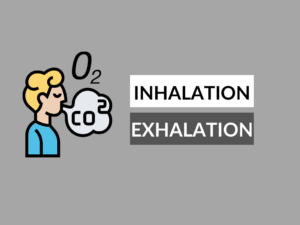Inspiration vs. Expiration: Understanding the Differences
“Take a deep breath in, then let it all out.” We often use these terms without realizing the fundamental differences they represent. In the realm of breathing, inspiration and expiration refer to distinct processes. In this article, we will explore the meanings, examples, uses, and differences between inspiration and expiration, shedding light on their unique roles in the respiratory system.
What is Inspiration?
Inspiration, commonly known as inhalation, is the process of taking in air and oxygen into our lungs. It is an active process driven by the contraction of the diaphragm and the muscles between the ribs. The fresh oxygen-rich air fills the alveoli, where oxygen diffuses into the bloodstream, ready to nourish our organs and tissues.
Examples of Inspiration:
- Taking a deep breath before speaking in public
- Inhaling the aroma of freshly baked cookies
- Filling your lungs with the invigorating scent of a pine forest
Uses of Inspiration:
Inspiration serves several essential functions:
- Providing oxygen to the body
- Removing carbon dioxide (a waste product) from the bloodstream
- Aiding vocalization and speech
What is Expiration?
Expiration, also known as exhalation, is the process of expelling air and carbon dioxide from our lungs. Unlike inspiration, it is largely a passive process where the diaphragm and rib muscles relax, allowing the lungs to shrink back to their resting size, pushing air out.
Examples of Expiration:
- Blowing out birthday candles
- Releasing a sigh of relief after completing a challenging task
- Exhaling forcefully during physical exertion
Uses of Expiration:
Expiration serves various purposes:
- Eliminating carbon dioxide, a waste product of metabolism
- Aiding in regulating body temperature
- Controlling the pH balance of the body
Differences between Inspiration and Expiration:
| Difference Area | Inspiration | Expiration |
|---|---|---|
| Process | Active | Mostly passive |
| Thoracic Cavity | Expands | Contracts |
| Diaphragm Movement | Contracts (moves downward) | Relaxes (moves upward) |
| Chest Wall Movement | Expands | Contracts |
| Air Pressure Change | Decreases (to draw air in) | Increases (to push air out) |
| Intercostal Muscles | Contract | Relax |
| Lung Volume | Increases | Decreases |
| Airflow Direction | Inward | Outward |
| Main Gas Exchange | Oxygen enters bloodstream | Carbon dioxide exits bloodstream |
| Used in Speech | Yes | No |
| Primary Function | Air intake | Air expulsion |
Conclusion:
Inspiration and expiration are two fundamental processes underlying our respiratory system. Inspiration involves active inhalation, primarily serving the purpose of oxygen intake, while expiration is largely a passive exhalation process, facilitating the expulsion of carbon dioxide. Understanding these differences allows us to appreciate the intricacies of breathing and its critical role in sustaining life.
People Also Ask:
- 1. What happens if inspiration and expiration fail?
If inspiration and expiration fail, oxygen cannot reach the body’s organs, leading to oxygen deprivation and potentially life-threatening conditions. - 2. Can inspiration or expiration be consciously controlled?
While inspiration can be partially controlled, expiration is primarily an involuntary process. Our bodies instinctively regulate the movement of air in and out of the lungs. - 3. How does inspiration affect heart rate?
Inspiration triggers a slight increase in heart rate due to the changes in intrathoracic pressure, prompting the body to optimize blood circulation. - 4. Can deep inspiration or prolonged expiration help manage stress?
Yes, practicing deep inspiration or prolonged expiration as part of relaxation techniques can activate the body’s relaxation response and reduce stress levels. - 5. Why is expiration longer than inspiration in some situations?
Expiration is often longer than inspiration, allowing for more effective removal of carbon dioxide from the lungs and preventing its accumulation in the body.


